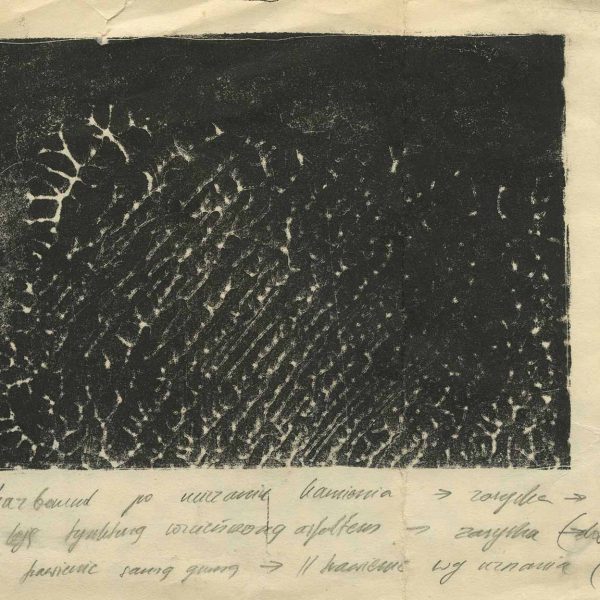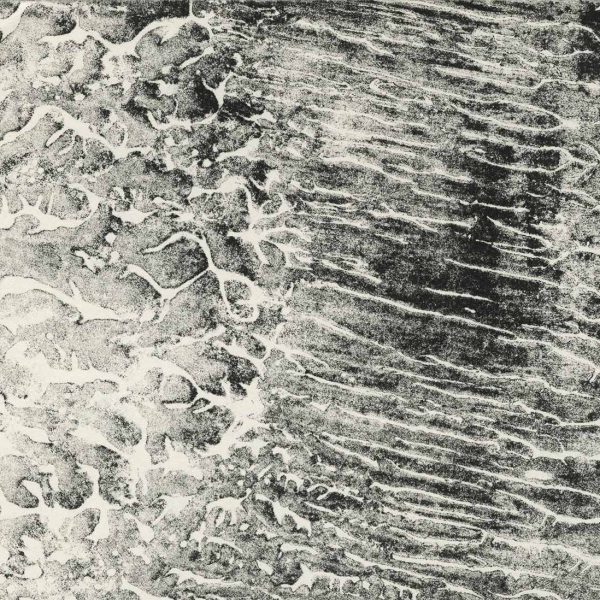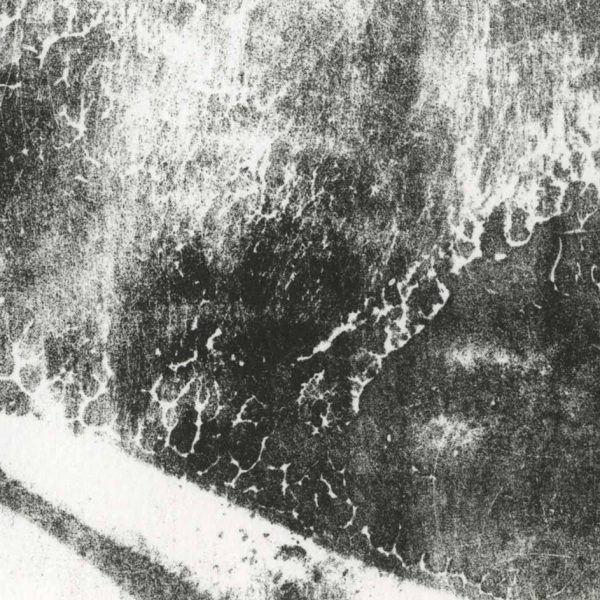Carborundum wash
Materials:
- carborundum or other abrasive used for graining stone
- asphalt
- arabic gum
- nitric acid

When grinding a lithographic stone, after some time it becomes more and more difficult to perform abrasion, and the gray abrasive material turns into a lighter one. This is because, during grinding, a thin layer of limestone is peeled off. This material is very fine and creates a “mud” causing the two stones to stick to each other.
When the two adhered stones are detached an interesting texture, resembling branches or organic structures, can be seen. The effect is interesting and, what’s more, it can be fixed. Of course, you can draw in such a “mud”, impress it and shape it in different ways.
The opacity (tone/brightness of the print) is controlled by the strength of etching and when removing the excess drawing.
After polishing the stone, remove the lavigator (or the second stone with which the graining was performed). A characteristic pattern should appear. If it is not satisfying, simply re-apply the stone/levigator/whatever until the desired effect. You can make the drawing completely from scratch. The layer of “mud” on the surface of the stone should not be too thick, the stone should be visible through the thinner parts of the drawing.
Spray or pour liquid asphaltum on the dry surface of the stone.
When the asphalt dries (it is best to leave it for a day or two), wash the stone surface with water. You will probably have to do it with sandstone or with other abrasive. The excess material is removed until we achieve a satisfactory effect.
Next, the stone should be strongly etched – at least 15 drops of nitric acid per 30 ml of gum arabic.
After drying, wash with turpentine, rub asphaltum in and roll up the stone. The strength of the second etching depends on the drawing.



